#Henschel & Sohn
Text

Feldbahnlok im Eisenbahnmuseum Tuttlingen
#dampflokblog.de#dampflok#steam train#railway#stoom locomotief#steam locomotive#eisenbahn#локомотив#lokomotywa#locomotive à vapeur#Feldbahn#Eisebahn#Railway#henschel & sohn gmbh#eisenbahnm#鉄道
51 notes
·
View notes
Video
"Steamhammer!" por Ronald Stroehlein
Por Flickr:
Steam locomotiv Manufacturer: Henschel and Sohn GmbH, Kassel Year of construction: 1923 Length ü. Buffer: 14,800 mm Operating weight: 105.0 t Boiler pressure: 12 kp / cm² Driving wheel diameter: 1,650 mm Power: 1,140 PSi Maximum speed: 100 km / h Coal supply: 4.5 t Water supply: 12 m³
4 notes
·
View notes
Text
Movimento teme pelo futuro do comboio histórico do Vouga
O Movimento Cívico pela Linha do Vouga (MCLV) admitiu temer pelo futuro do comboio histórico do Vouga após tomar conhecimento de que a composição não circulará na época de Páscoa, depois de ter sido criado há sete anos.

"Se no presente ano a não realização da temporada de Carnaval já foi motivo de preocupação, a não realização da temporada de Páscoa faz soar todos os alarmes", referiu o MCLV em comunicado enviado à agência Lusa.
O movimento disse estar convicto "de que se nada for feito em contrário, o projeto Comboio Histórico do Vouga corre sérios riscos de ter os dias contados".
Segundo o movimento, a CP - Comboios de Portugal confirmou "que não irá haver temporada de Páscoa, argumentando falta de condições".
A Lusa enviou questões à CP acerca do comboio histórico do Vouga e aguarda resposta.
De acordo com o MCLV, "nos últimos meses de 2023, foi detetada uma grave avaria na caldeira da locomotiva a vapor CP E214, tornando-a inoperacional, e sabe o MCLV que só com grande resiliência por parte do pessoal da manutenção da CP é que foi possível a realização da última temporada de Natal do Comboio Histórico, desta vez com recurso à locomotiva a diesel".
O movimento referiu que "a CP está a ter problemas em reunir as condições necessárias para avançar com a reparação da caldeira da locomotiva a vapor", já que "os custos dessa reparação são extremamente avultados, e, segundo consta, está a ser difícil encontrar uma resposta junto da indústria nacional".
"A solução poderá mesmo passar pela aquisição de uma nova caldeira no estrangeiro. No entanto, esse processo será moroso", podendo também a CP recuperar "uma outra locomotiva, tendo em vista a sua readaptação para a queima de gasóleo, à semelhança do que já acontece com a locomotiva CP 0186 e que é utilizada no Comboio Histórico do Douro".
O comboio histórico do Vouga começou a circular em 2017 com recurso à locomotiva diesel Alsthom CP9004 e três carruagens dos primeiros anos do século XX, tendo sido adicionadas, entretanto, mais carruagens, como as napolitanas dos anos 30, que estavam na Linha do Tua.
"Nos finais de 2019, a recuperação da locomotiva a vapor Henschel & Sohn CP E214 foi a cereja no topo do bolo", recordou o movimento, que referiu que mais material recuperado está em Contumil (Porto) à espera de ser colocado na Linha do Vouga, algo que ainda não aconteceu por falta de espaço de armazenamento em Sernada do Vouga, apontou.
O movimento cívico reconheceu "o empenho, a bravura e até a paixão que o Município de Águeda e a equipa de Manutenção/Comboios Históricos da CP - Comboios de Portugal têm demonstrado ao longo dos tempos para manter este projeto sobre carris, mas neste momento está claro que isso já não é suficiente".
Para o MCLV, "há que trazer mais entidades para este projeto, sejam elas empresariais ou da sociedade civil, envolvendo todas as autarquias servidas pela linha".
"Será bastante embaraçoso para a região de Aveiro não apresentar um dos seus maiores produtos turísticos num ano em que a sua capital de distrito é também a capital portuguesa da Cultura", considerou o movimento.
Assim, o MCLV apelou aos municípios de Espinho, Santa Maria da Feira, São João da Madeira, Oliveira de Azeméis, Albergaria-a-Velha, Águeda e Aveiro para que "salvem o comboio histórico do Vouga".
0 notes
Photo
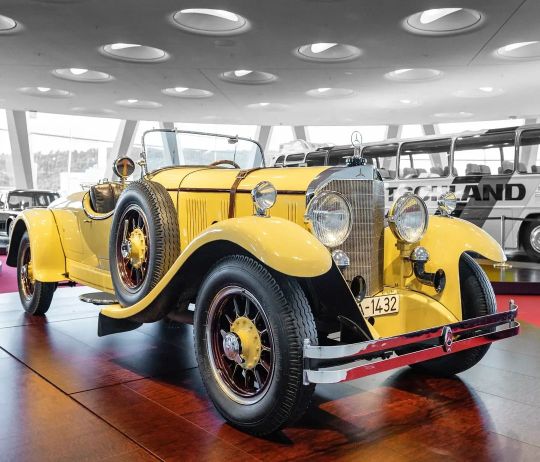
24/100/140 hp Mercedes-Benz roadster - Mercedes-Benz Museum Stuttgart In December 1926, industrialist Oscar Henschel bought this two-seater roadster with supercharged engine. From 1924 he stood at the head of the locomotive, commercial vehicle and later aircraft manufacturer Henschel & Sohn in Kassel. Other prominent owners of a 24/100/140 hp Mercedes-Benz were the kings of Afghanistan and Bulgaria, politician Gustav Stresemann, and juggler Enrico Rastelli. Cylinders 6 Displacement 381 cu in Output 140 hp (103 kW) at engine speed 2800/min Top speed 75 mph Production period 1924-1929 Units produced 1080 #mercedes #mercedesbenz #mercedesroadster #roadster #cabrio #cabriolet #mercedeslife #mercedeslifestyle #mercedesheritage #classiccars #classiccar #luxurycars #traveling #travelgram #travel #enjoyinglife #carmuseum #museum #luxury #mercedesmuseum #kings #6cylinder #bestcars #vintagecars #juggler #luxuryvehicle #photooftheday #history #carhistory #oldtimersday (at Mercedes-Benz Museum) https://www.instagram.com/p/CnP3sJHI-mK/?igshid=NGJjMDIxMWI=
#mercedes#mercedesbenz#mercedesroadster#roadster#cabrio#cabriolet#mercedeslife#mercedeslifestyle#mercedesheritage#classiccars#classiccar#luxurycars#traveling#travelgram#travel#enjoyinglife#carmuseum#museum#luxury#mercedesmuseum#kings#6cylinder#bestcars#vintagecars#juggler#luxuryvehicle#photooftheday#history#carhistory#oldtimersday
0 notes
Text
Etsy-Artikel in meinem Shop erhältlich
Sieh dir dieses Produkt an in meinem Etsy-Shop https://www.etsy.com/de/listing/975830714/henschel-sohn-henschel-logo-anstecknadel
0 notes
Photo

Kriegslokomotive: DRB Class 52 steam locomotive No. 036 at the Latvian Railway History Museum. Riga, Latvia, May 25, 2012. Photo by D.P.
It was built by Henschel & Sohn GmbH works at Kassel, Germany, 1942. Builders number - 26954. In 1947, it was captured by the Soviets and adapted to 1524 mm track. After WWII, up to 2700 Class 52 locomotives were operated by Soviets. In 1952, it was titled as class ТЭ, but old numeration was saved. In Latvia, DRB Class 52 locomotives were in operation from 1943 till 1985.
Technical data:
Power 1104 kW
Maximum speed 80 km/h
Maximum steam pressure in the boiler 16 kg/cm2
Driving wheel diameter 1400 mm
Equipped locomotive and tender weight 135 t
#Latvia#Riga#Latvian Railway History Museum#Dzelzceļa muzejs#original photography on tumblr#street photography#railway#steam locomotive#European history#WWII#Germany#Northern Europe#museum#henschel & sohn gmbh
13 notes
·
View notes
Video
CP E 214 + Comboio Histórico do Vouga_Cº 20801_Aveiro_01-03-2022 by Gil Ismael Braga Monteiro
Via Flickr:
Comboio Especial de Passageiros, procedente de Aveiro e com destino a Macinhata do Vouga.
#Aveiro#Portugal#CP#E 200#E 214#Henschel & Sohn#1923#Comboio#Histórico#Vouga#Carruagens#Históricas#Nicaise#CEyf 466#CEyf 4178#Ceyf 4169#Oficinas de Campanhã#MAN#Napoli#82-29003#Via Estreita#Infraestruturas de Portugal#Linha do Vouga#Macinhata#Steam#Vapor#Carvão#flickrTravelAward
1 note
·
View note
Video
Sugar mill Australia - Cuba by Berny Sackl
Via Flickr:
Abandoned sugar mill Australia (sugar mill no. 303 of Cuba), in Jagüey Grande. The two steam locomotives are MINAZ no. 1716, 2-6-0, built by Henschel & Sohn in 1913, constr. no. 12428 and MINAZ no. 1515, wheels 4-6-0, built by ALCO (Schenectady) in 08.1914, constr. no. 54844.
2 notes
·
View notes
Photo
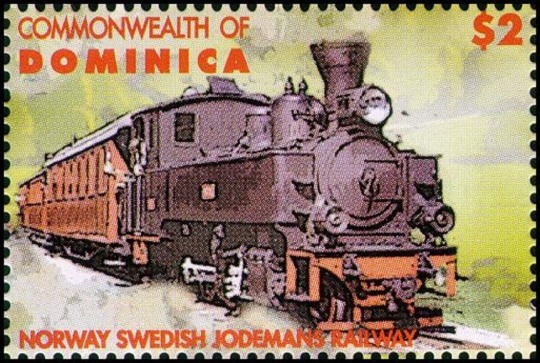
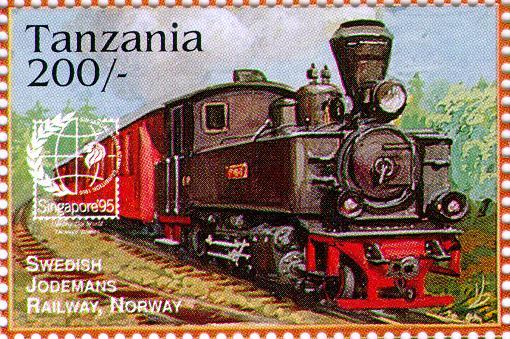
Prydz is famous across borders! Not sure why they have mixed Sweden into this though....
"The text "Swedish Jodemans Railway, Norway" can be read on the stamp, which is quite puzzling, because the stamp shows a class XXIX, 1'C1' (2-6-2T) locomotive from the narrow gauge Urskog-Høland railway (U.H.B.). On closer inspection it appears to be No. 7, named "Prydz", the last engine provided before the close down of the line in 1960, as it looks after rebuilding and restoring by the railway museum foundation. More accurately this is the only member of the class XXIXb, 20 tons, 7.99 m l.o.b., built in Germany by Henschel & Sohn, delivered 1950. It got its name in 1952 after the general manager of the railway, Eigil Prydz. The three XXIX locomotives were recognized as being both economical and easy to drive. After the close down of the line, No. 7 served for 20 years at the Norwegian Railway Museum in Hamar, until it was returned to U.H.B., where it now can be seen pulling the museum trains. This stamp is one of nine stamps on a minisheet showing steam locomotives from different countries."
Source: http://onni.no/norway/stamps_F03.htm?fbclid=IwAR21yuFfIQy6jwo6x56KpjNhT_C7NnGAFAMAIkuc5PLvOtiVPXmrseUZj6A
9 notes
·
View notes
Photo
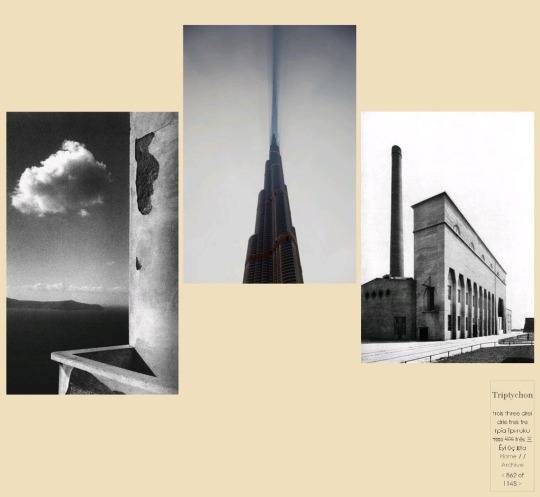
(498)
monkeastman: William Abranowicz Cloud and Terrace, Santorini Greece
1990; blazepress:The Burj Khalifa is so tall, it cuts through clouds; deseopolis: Kohlenbunker, Henschel & Sohn. Kassel, Germany. 1917. Kurt von Brocke
(via triptychon64)
Visit me on triptych193.wordpress
2 notes
·
View notes
Photo
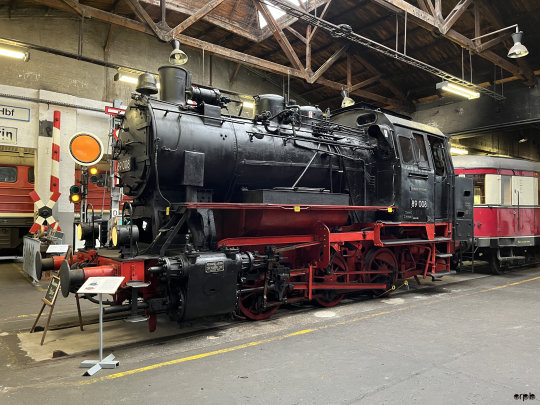
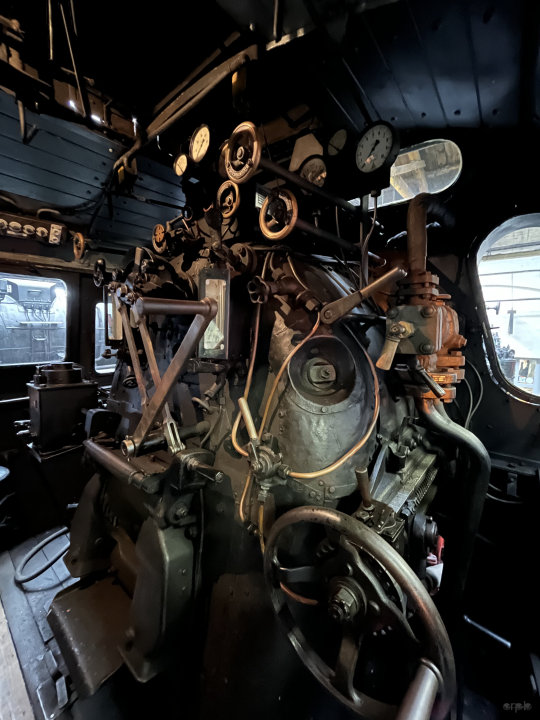
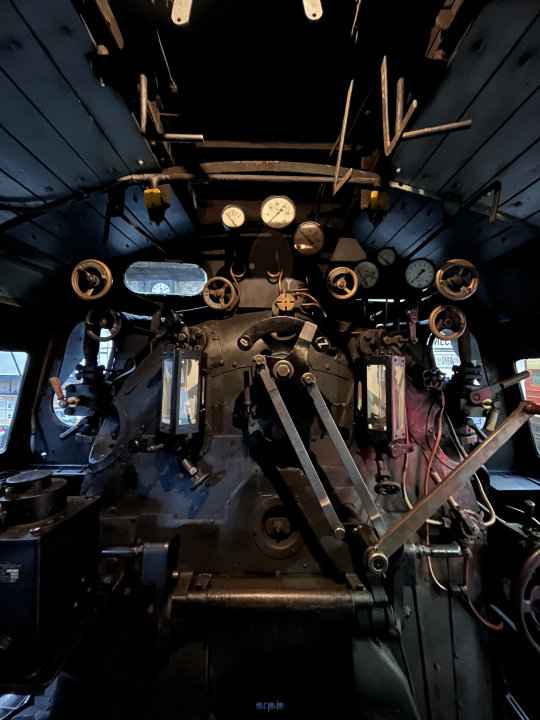

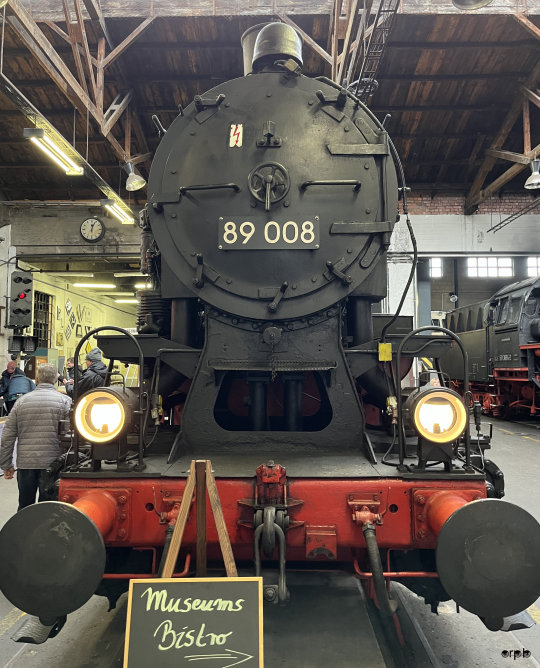
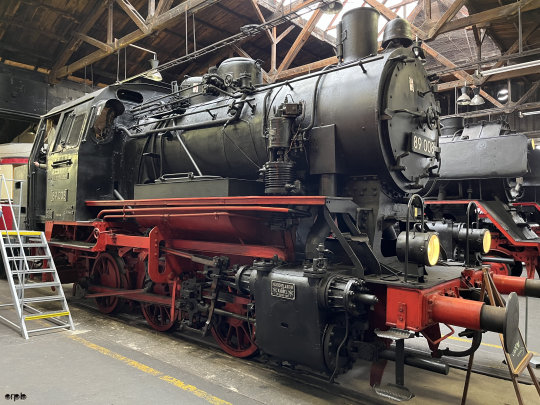
Dampflokomotive 89 008 (Henschel & Sohn, Kassel; Baujahr 1937; Fabriknummer 23583)
Die Baureihen 89.0 war eine Güterzugtenderlokomotive und die kleinste Einheitslokomotive der Deutschen Reichsbahn. Dieses letzte Exemplar dieser Baureihe, wurde 1968 im Bw Dresden-Altstadt außer Dienst gestellt und steht heute sehr schön restauriert im Mecklenburgischen Eisenbahn- und Technikmuseum Schwerin.
Steam locomotive 89 008 (Henschel & Sohn, Kassel; built 1937; serial number 23583)
The class 89.0 was a freight tender locomotive and the smallest standard locomotive of the Deutsche Reichsbahn. This last example of this class was decommissioned in 1968 at the Dresden-Altstadt depot and is now beautifully restored in the Mecklenburg Railway and Technology Museum in Schwerin.
#dampflokblog.de#89 008#Eisenbahnmuseum Schwerin#Henschel & Sohn#Mecklenburgischen Eisenbahn- und Technikmuseum Schwerin#dampflok#steam locomotive#stoom locomotief#locomotora a vapor#locomotive à vapeur#Steam train#locomotora#locomotive#Dampfspeicherlokomotive#Eisenbahnmuseen & Betriebshöfe#Railway Museums & Depots#Eisenbahn#Railway#鉄道#локомотив
40 notes
·
View notes
Photo

Tank Tiger Cross Stitch Pattern
★ Pattern specification for different types of fabric
• Fabric: 16 count Aida.
• Colors: 13. Palette: DMC.
• Size: 150 × 84 stitches.
• Finished size will vary depending on the count fabric/canvas you choose.
✔ 14 count ⇒ Size: 10.71 × 6 inches | 27.2 × 15.24 cm
✔ 16 count ⇒ Size: 9.38 × 5.25 inches | 23.81 × 13.34 cm
✔ 18 count ⇒ Size: 8.33 × 4.67 inches | 21.16 × 11.86 cm
💾 5 PDF includes:
1. FIVE SCHEMES (Fabric: 16 count White Aida):
• Color Blocks with Symbols.
• Color Symbols.
• Color Blocks.
• Color Crosses.
• Black and White Symbols.
2. Color photo for reference.
3. List of DMC thread colors (instruction and key section).
🔎 The Tiger I is a German heavy tank of World War II that was employed from 1942 in Africa and Europe, usually in independent heavy tank battalions. Its final designation was Panzerkampfwagen VI Tiger Ausf. E often shortened to Tiger.
🔎 Production of the Tiger I began in August 1942 at the factory of Henschel und Sohn in Kassel, initially at a rate of 25 per month and peaking in April 1944 at 104 per month. An official document of the time stated that the first Tiger I was completed in August 4. 1,355 had been built by August 1944, when production ceased. Deployed Tiger I's peaked at 671 on 1 July 1944.
Today, only seven Tiger I tanks survive in museums and private collections worldwide. Tiger 131 at the UK's Tank Museum, which was captured during the North Africa Campaign, is currently the only one restored to running order.
Source: Tank Tiger Cross Stitch Pattern | German Tank Tiger.
#WW2#Second World War#Wehrmacht#tank battalion#Army#cannon#Gun#weapon#Armored#armour#Combat#ordnance survey#ammunitions
2 notes
·
View notes
Photo
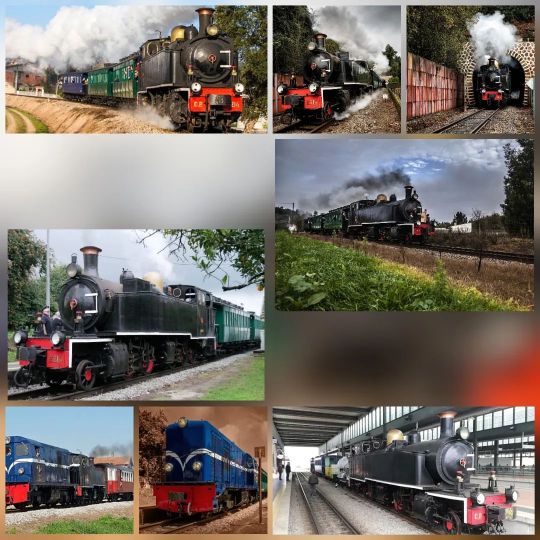
The Vouga Historic Train returned to steam between Aveiro and Macinhata do Vouga. “In addition to the iconic steam locomotive built by the German house Henschel & Sohn”, explains CP in the party programme, “the train will run with a Neapolitan carriage from the 30s of the last century, three historic wooden carriages built in Belgium (1908 ), Germany (1925) and Portugal (1913)”. The Portuguese section originates “in the workshops of Porto, by the then State Railways” and also includes a “carriage built in Barreiro, in 1908, and which circulated on the Corgo Line”. The program starts with departure from Aveiro at 9 am, stops in Águeda (only for departures), and arrives in Macinhata do Vouga at 10:43 am. There is also entertainment at the Macinhata Station “with a group of music and traditional songs of the region and exhibition of regional products”, guided tour of the Railway Museum and return scheduled for 12:15 (arrival in Aveiro at 14:06). Prices are 35 euros for adults and 25 euros for children (from 4 to 12 years old). Detail: according to CP, “if the CP E214 steam locomotive cannot be used, the 9004 diesel locomotive used in the summer editions will be used”. https://www.instagram.com/p/CcyTikwjBc-/?igshid=NGJjMDIxMWI=
0 notes
Photo

Coal bunker Henschel & Sohn, Kassel, Curt von Brocke, 1917
354 notes
·
View notes
Link
Remarks & Notes 40 years after the steam rotary snow blower Xrot # 100 was retired and exhibited in the Swiss Museum of Transport (VHS) Lucerne, this 125 years old vehicle was steamed up this day in Brugg AG. Work was made by the steam group Zürich (Verein Dampfgruppe Zürich VDZ), initiated and headed by Stefan Landenberger. The Xrot # 100 was built in 1896 by Henschel & Sohn in Cassel/Germany for the Gotthard railway, under licence of Lesley and has about 800 HP. The approximately 10-foot wheel (2,96 meter) turns at up to 140 revolutions per minute.
0 notes
Photo
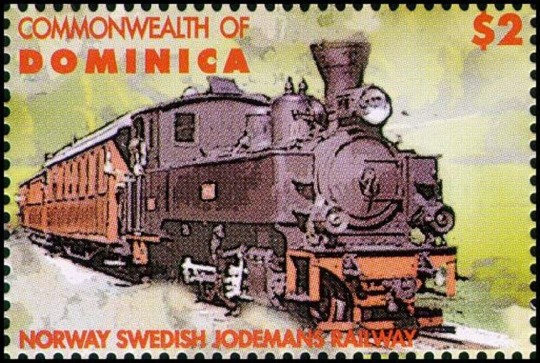
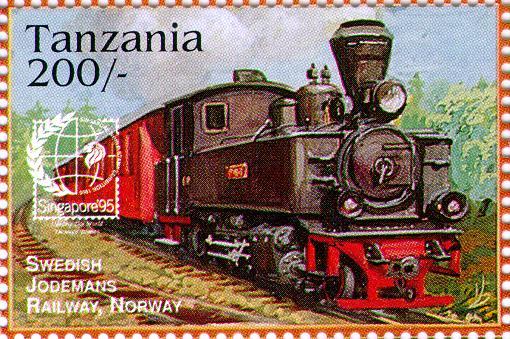
Prydz er berømt over landegrenser! Litt usikkert hvorfor de har blandet inn Sverige...
"The text "Swedish Jodemans Railway, Norway" can be read on the stamp, which is quite puzzling, because the stamp shows a class XXIX, 1'C1' (2-6-2T) locomotive from the narrow gauge Urskog-Høland railway (U.H.B.). On closer inspection it appears to be No. 7, named "Prydz", the last engine provided before the close down of the line in 1960, as it looks after rebuilding and restoring by the railway museum foundation. More accurately this is the only member of the class XXIXb, 20 tons, 7.99 m l.o.b., built in Germany by Henschel & Sohn, delivered 1950. It got its name in 1952 after the general manager of the railway, Eigil Prydz. The three XXIX locomotives were recognized as being both economical and easy to drive. After the close down of the line, No. 7 served for 20 years at the Norwegian Railway Museum in Hamar, until it was returned to U.H.B., where it now can be seen pulling the museum trains. This stamp is one of nine stamps on a minisheet showing steam locomotives from different countries."
Kilde: http://onni.no/norway/stamps_F03.htm?fbclid=IwAR21yuFfIQy6jwo6x56KpjNhT_C7NnGAFAMAIkuc5PLvOtiVPXmrseUZj6A
0 notes

